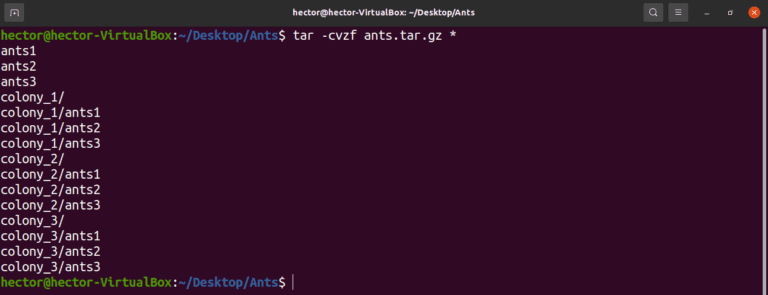

The syntax for –strip-components option may be a little different between tar implementations in different Linux distributions, but the basic idea is the same. To extract or untar the file to the current directory, type the following, (Making sure to replace filename.tar with the actual filename) tar -xvf filename.tar Or to extract to another directory, type tar -C /myfolder -xvf filename.tar How to Open or Untar a tar. Therefore, it extracts the files to the current directory without the directory structure. The bz2 is another popular compression format where tar can be compressed with it. In the following example, we extract the tar.gz file. The tar files can be compressed with the gzip as gz format. Since we give “ –strip-components=2″ in our example, tar stripes directory1/directory1.1 and directory1/directory1.2 from the file paths. A tar file can be untared or extracted with the following command.
#UNTAR COMMAND IN LINUX ARCHIVE#
tar strips the given number of directories from file names when we extract the archive file. All Linux operating systems have the Tar command installed by default, so your employees do not all need to use the same Linux distribution. v: This option will list all of the files one by one in the archive. The options are pretty straightforward for this: x: This tells tar to extract the files. –strip-components option expects to take a number. tgz) If your tar file is compressed using a gZip compressor, use this command: tar xvzf. For this purpose, we have to use –strip-components option of tar: $ ls This option will list all of the files one by one in the archive. Where, x: This option tells tar to extract the files. We can use number instead of letter on the suffix by adding -d option on the split command. 1) If your tar file is compressed using a gzip compressor, use this command to uncompress it. They have prefix vid, so the result will be vidaa, vidab, vidac, vidad, vidae, and vidaf.


Then, it will split into (approximately) six parts of 5MB file. We can extract the contents of this archive file without the directory structure. This command will create the archive file name. Let’s assume that we have an archive file, but it keeps the directory structure: $ tar -tf archive.tar Updating Archive File for Multiple Directories It does not have any adverse effect when we extract the archive file. ) in the output result from tar‘s operation in two different directories. Let’s check the contents of the created archive file: $ tar -tf archive.tar In short, the tar command processes the directories in the given order.

Finally, it adds the files in that directory to the archive file. ” tar command changes the directory once more. We have to specify the second directory relative to the first one. Then it archives the files in that directory. Just like zip, unzip has a -q (quiet) option so that you do not.
#UNTAR COMMAND IN LINUX ZIP FILE#
For example, in the directory, where you have a zip file named my-archive.zip, to unzip it, the command would be: unzip my-archive.zip. Tar was originally designed for creating. It also can extract tar archives, display a list of the files included in the archive, add additional files to an existing archive, and various other kinds of operations. You need to tell unzip the name of the zip file which you want to unzip. Tar Command in Linux (Create and Extract Archives) The tar command creates tar files by converting a group of files into an archive. We specify it with “ -C directory1/directory1.1. Using unzip command in Linux is absolutely simple. Tar command in this example first changes the current directory to directory1/directory1.1. Let’s say we want to archive directories directory1/directory1.1 and directory2/directory2.1: $ tar -cf archive.tar -C directory1/directory1.1. Join the nixCraft community via RSS Feed, Email Newsletter or follow on Twitter.What if we want to archive two or more different directories without keeping the directory structure? We can still use -C option. He wrote more than 7k+ posts and helped numerous readers to master IT topics. Vivek Gite is the founder of nixCraft, the oldest running blog about Linux and open source. See tar command man page for further information by typing the following man command: (Note that it may be necessary to unpack some files twice.) If you would rather follow the UNIX-style instructions below you can use the Terminal command-line. We use the tar command on Linux to extract files from tarball archives. Want to extract files to dir called /tmp/out? Try the following syntax to change to /tmp/out before performing any operations using tar:


 0 kommentar(er)
0 kommentar(er)
